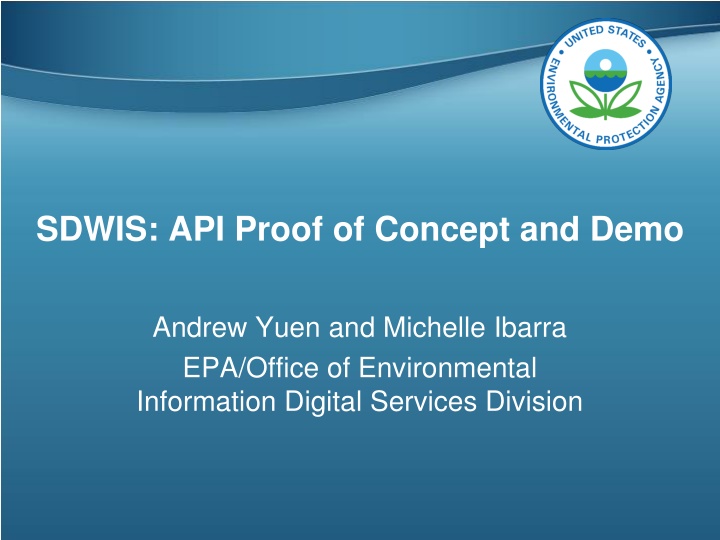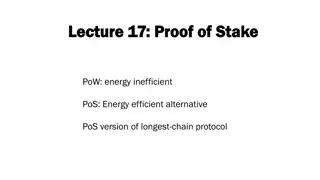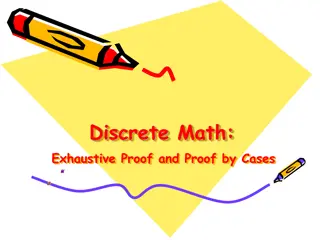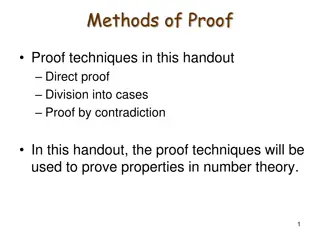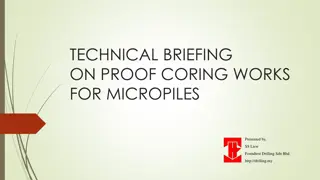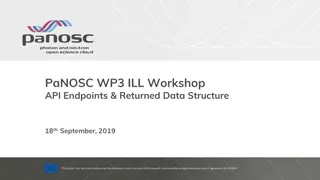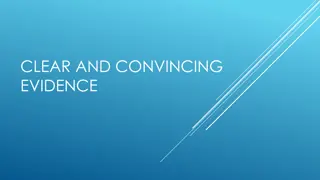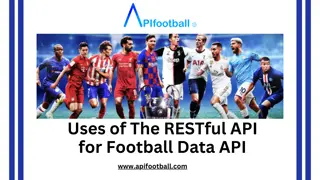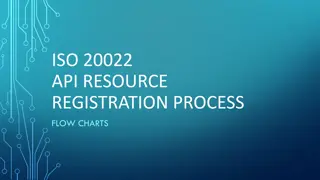SDWIS: API Proof of Concept and Demo
EPA's Office of Environmental Information's Digital Services Division showcases a proof of concept and demo for their SDWIS API. The team discusses the use of REST APIs, issues encountered, and the development process, including making GET and POST requests. The demo demonstrates failed submissions and data retrieval in the SDWIS database.
Uploaded on Mar 03, 2025 | 0 Views
Download Presentation

Please find below an Image/Link to download the presentation.
The content on the website is provided AS IS for your information and personal use only. It may not be sold, licensed, or shared on other websites without obtaining consent from the author.If you encounter any issues during the download, it is possible that the publisher has removed the file from their server.
You are allowed to download the files provided on this website for personal or commercial use, subject to the condition that they are used lawfully. All files are the property of their respective owners.
The content on the website is provided AS IS for your information and personal use only. It may not be sold, licensed, or shared on other websites without obtaining consent from the author.
E N D
Presentation Transcript
SDWIS: API Proof of Concept and Demo Andrew Yuen and Michelle Ibarra EPA/Office of Environmental Information Digital Services Division
Who we are We work in EPA s IT Shop, the Office of Environmental Information. Provide IT consulting (recommendations and insight) to EPA IT Development teams. Host EPA s Developers Guild, a monthly webinar available to EPA, State and Tribe Partner Developers, IT Professionals, and Project Managers. 2 U.S. Environmental Protection Agency
What we are going to share today Why REST APIs were used What was developed: REST API proof of concept What issues we ran into Suggestions for reuse Looking Ahead Contact 3 U.S. Environmental Protection Agency
Why REST APIs were used Flexibility REST API can handle multiple data calls. Return data in different formats. Developers are familiar with REST APIs. Most modern languages have tooling to support REST APIs. Conclusion: Satisfy the need for Primacy Agencies to easily submit data to the EPA. 4 U.S. Environmental Protection Agency
What was developed: API Proof of Concept The user interface was developed to: Make various GET request to an endpoint to make it easy to look up identifiers such as Water System ID, Facility ID, Sample Point ID, and Lab ID. Make a POST request to send data of a Negative Coliform Test Sample. Demo Assumptions PHP and Bootstrap were used to develop the API and UI. Mock basic authentication. Not all Primacy Agencies have Sampling Point ID or Lab IDs. Estimated time to develop the UI: 1 Developer part-time, 3-4 weeks 5 U.S. Environmental Protection Agency
DEMO: API PROOF OF CONCEPT - FAILED SUBMISSION - TOTAL COLIFORM NEGATIVE SAMPLE SUBMISSION - SEEING SUBMISSION IN SDWIS DATABASE 6 U.S. Environmental Protection Agency
Issues Encountered The APIs for the get requests that we used to populate the typeaheads were returning additional information that we did not need. The API by default was returning data in XML and not JSON format. The API was expecting dates in ISO-8601 format which meant we had to convert to that format. 7 U.S. Environmental Protection Agency
Recommendations Moving Forward Proof of Concept Implement OAuth authentication Community Code Reuse and Maintenance User testing 8 U.S. Environmental Protection Agency
Recommendations: Proof of Concept This proof of concept was developed to demonstrate how to quickly set up a UI with the current SDWIS PRIME APIs. Any part of the code developed from this proof of concept can be reused by Primacy Agencies at their discretion and coordinated with the SDWIS Prime team. 9 U.S. Environmental Protection Agency
Recommendations: Implement OAuth There is a lot of work that needs to be done in order to implement a REST based API model for submitting data to SDWIS PRIME. In order to be able to use these APIs in production, the API must be secured and proper OAuth authentication must be implemented. Coordinate with EPA s SDWIS Prime team, EPA s CDX team, Cybersecurity Specialist, etc. 10 U.S. Environmental Protection Agency
Recommendation: Code Reuse Where possible, the Primacy Agency s should consider developing common code based on the SDWIS APIs for reuse. With limited resources, this approach will help establish a community of developers to collectively maintain, improve, and reuse code. 11 U.S. Environmental Protection Agency
Recommendations: Usability Testing Extensive user testing involving SDWIS Prime team and the Primacy Agencies to design and implement the API and any UIs that are developed as examples. Validate your submission workflows. Draw mock wireframes before spending funds on development. Test with real users. Improve the UI will real feedback. 12 U.S. Environmental Protection Agency
Looking Ahead OpenAPI Specifications API description format for REST APIs. Standardization to this modern approach increases usability and consumption of REST APIs. API Gateway Code reuse Where possible, create open source code to increase the ability for developers to work together, foster collaborative development, share and maintain code together. 13 U.S. Environmental Protection Agency
Thank you! Contacts API Proof of Concept Andrew Yuen (yuen.andrew@epa.gov) Michelle Ibarra (ibarra.michelle@epa.gov) SDWIS Prime Contacts Kristen Gastner (Gastner.Kristen@epa.gov) Elinor Keith (keith.Elinor@epa.gov) Resources Code Repository: https://github.com/USEPA/SD WIS-PHP-REST-API-DEMO Developer Central: https://developer.epa.gov/ 14 U.S. Environmental Protection Agency
